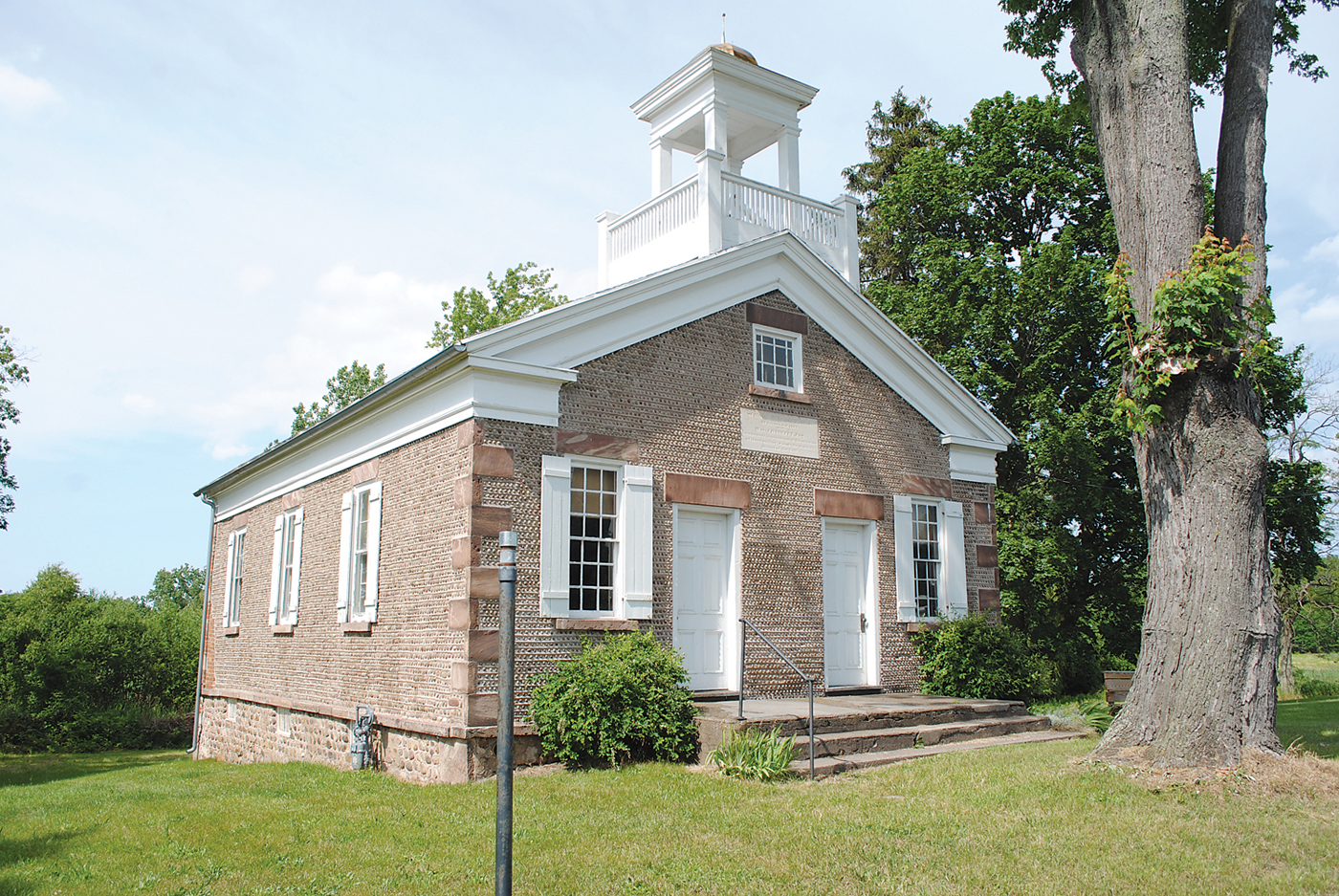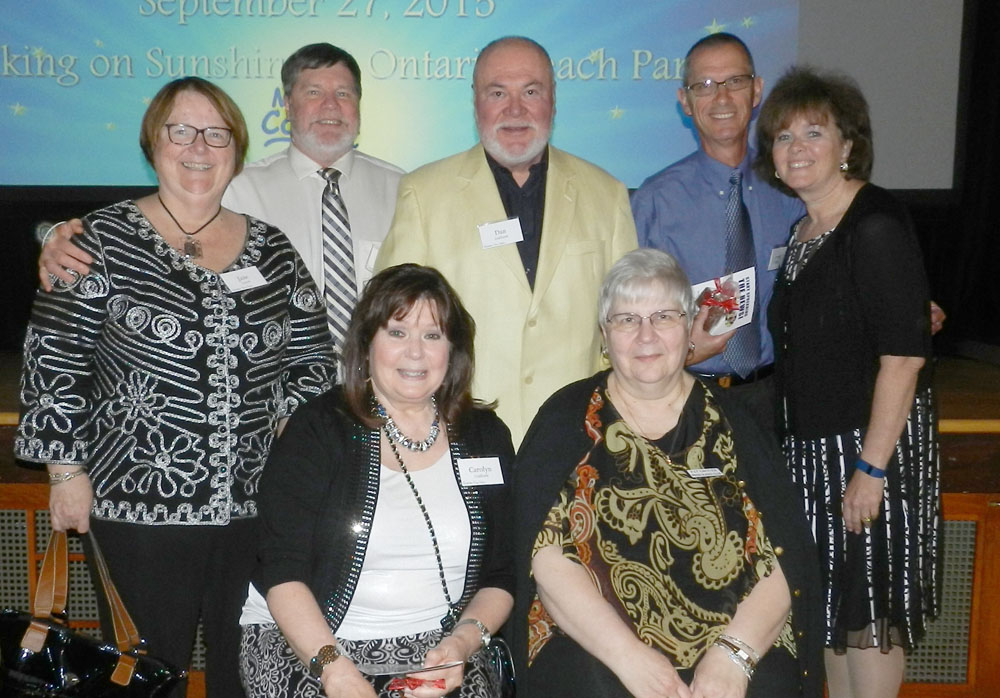Ice Rescue on Sodus Bay

I had finished this month’s article on ice fishing and planned to submit it on Tuesday. That is, before I went ice fishing at Sodus Bay on Sunday, February 9, and watched in disbelief as a father and his twelve-year-old son went through the ice right before my eyes.
When I arrived at Sodus Bay on Sunday morning at 9 a.m., there were at least 200 people already on the ice, fishing. There were so many vehicles on Shaker Tract Road that I had trouble finding a place to park. As I made my way onto the ice, I made a point of walking out on someone else’s tracks in the fresh snow at all times as I knew the ice hadn’t been safe for very long. I wasn’t especially worried because there were at least fifty ice shelters out where I was headed (see photo). After walking north for about a half-mile, I arrived in the village of ice shelters. I wove my way through them, looking to get on the outside of the main group of fishermen. I had heard recently that too much activity on the ice could spook the fish.
As I got on the edge of town, I was surprised to see that there was nobody fishing any further northeast as that area had been one of the better spots on the bay last winter. The ice appeared fine with two fresh inches of snow on top, but there wasn’t much evidence of anyone fishing any further. So, I stopped to drill a hole and saw that there were a good six inches of ice. Experts say ice that is three to four inches is safe to walk on, so I was okay.
The fishing was slow, and the perch I was catching were small (one stripers). About an hour in, I heard the sound of an engine and looked up from my hole to see a man and his son on a snow dog about 150 yards away traveling along at a fair rate of speed. A snow dog is a machine specifically made for ice fishing that pulls you along, similar to those stand-behind riding lawnmowers. As I watched them drive across this barren area where there were no fishermen for hundreds of yards in any direction, I thought, “Wow, the ice must be stronger there than I thought.” A minute later, I stared in disbelief as their machine bogged down and as if in slow motion, dropped through the ice. I couldn’t believe what I was witnessing.
I was the nearest person to them at about 150 yards and started their way at a fast pace, pulling my empty ice sled behind me. I noticed four other fishermen coming from my left as well. I yelled, “Call 911!” and continued to hurry along. As I merged with these guys, they had stopped in front of me. I started to move past them, but one man shouted, “Stop!” just as I felt the ice below me get spongy and make a cracking sound. I froze and then quickly stepped back. It was there that you could see a crust line of ice six inches high that was an obvious border between safe ice and weak ice. One of the fishermen had a heavy ice spud bar that I borrowed and chopped down on the ice. The spud went right through like a hot knife through butter, revealing the ice on the other side of the crusted ridge to be barely one inch thick. So, it was there we all had to stay.
The boy was lying upon the ice, his father in the water clutching the edge of the hole. The kid was only fifty yards away from me and I had to fight my urge to rush out and help him. We shouted encouragement to the boy to start crawling, and to his credit, he did, little by little.
By now, there were a dozen people there, and none of us had a decent rope to throw to the boy, let alone to his father another 30 yards behind him. The boy kept crawling as we coaxed him, and, after ten minutes, he made it to the twenty feet of rope we had thrown, so we pulled him to safety. He was wet, but all right. I asked him if he was cold and he said no.
His father kept trying to climb up on the ice but kept falling back as the ice broke, or he lost his grip at each attempt. We continued to yell out words of encouragement, which was all we could do … talk about a helpless feeling. His girlfriend arrived from somewhere behind us as she had been fishing in one of the huts in the village. She immediately wanted to go out to him, but we stopped her as I showed her with the spud how thin the ice was. We now learned his name and all shouted to Jason to keep trying to get up on the ice. He had been in the water a good 20 minutes with no rescue in sight, and we could see he was exhausted. A lone DEC officer showed up and, to his credit, attempted to get out to Jason using my small ice fishing sled as an iceboat. The problem was that there was no way to propel the sled forward on the thin ice. He had two ice picks and started just inching along. We had tied a rope around him in case he went through so we could pull him back. The officer made it about ten yards out on the bad ice when an airboat that I never even knew existed motored out from behind Newark Island and sped our way, flying over the expansive area of bad ice. When they got about 80 yards from Jason they stopped and three responders in survival suits got out and started running across the weak ice to Jason who was barely hanging on for his life at this point. One of the rescuers went through the ice while the other two kept going. They made it to the man and wrapped the rope around him but didn’t have a long enough rope to make it back to the airboat. We yelled out to throw the rope to us. He did, and with the power of eight fishermen pounding with adrenaline, successfully pulled Jason that sixty yards to our safe ice so fast he could have water skied.
Once on solid ice he was in shock but surprisingly not panicked. He appeared to be a middle-aged, fit, hardy-looking dude which surely helped save his life. He kept saying calmly, “I can’t feel my legs.” About that time, an EMT arrived from shore a good mile’s hike away. They put Jason in my sled and pulled him over to the airboat, which had repositioned onto safe ice. The EMT responder joined Jason in the boat, and off they went to the hospital where I understand he is doing okay.
The Rochester TV news had the story all wrong as they reported two men fell through the ice while ice fishing 30 feet from shore. The truth was that they were a good mile from the mainland.
I must say that there were times in those 30 minutes before the airboat arrived that I thought the guy was not going to make it. We were a mile from shore. How were they going to rescue him way out here before hypothermia set in, and he would just let go out of exhaustion?
It was a terrible feeling being so close to Jason and his son and not be able to help them. I promise you that I will not be out on the ice again without a good quality rescue rope and a pair of ice picks to wear around my neck for digging in and pulling yourself up out of the water and onto the ice. This situation was nothing to sneeze at, and if it wasn’t for that beautiful airboat from the Alton Fire Department and its fearless rescue crew, I believe Jason would not have made it.
I remarked to one of the first responders as he returned my sled to me, “Whatever they are paying you guys, it’s not enough.” His response, “We don’t get paid, we are volunteers.”
True heroes right in our very midst! God bless all first responders!




